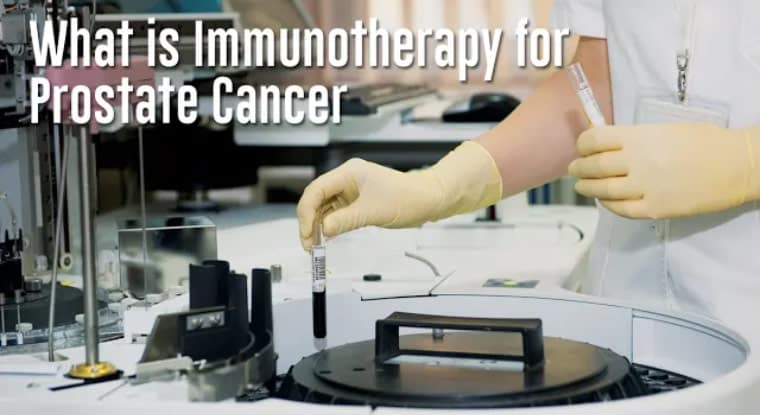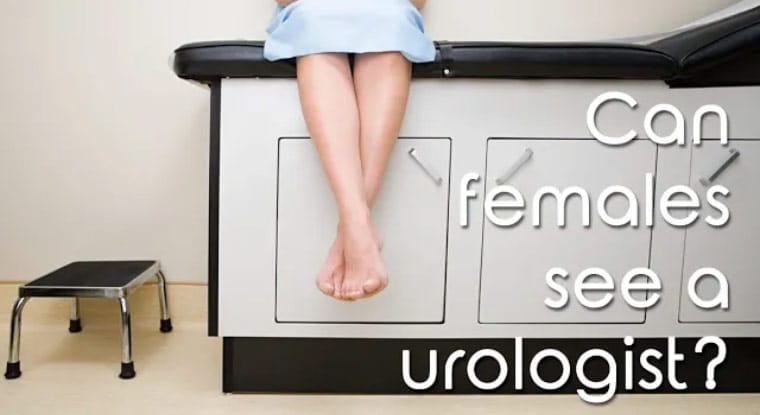Explore these urologist insights with Dr. Martin Richman and Dr. Shaw Zhou, as they share their thoughts on urology and its long-term benefits.
Continue readingThe Importance of the PSA Test: A Key to Prostate Health
Understand the importance of the PSA test. It is recommended for men between the ages of 55-70 who expects to live at least another 10 years.
Continue readingDr. Lonnie T. Klein of Advanced Urology Institute in Safety Harbor, FL, designated as a UroLift® Center of Excellence
How Is Prostate Cancer Treated
After a diagnosis of prostate cancer, there are several treatment options you may want to consider. However, there is no single option that is right for all men with prostate cancer. Some prostate tumors grow very slowly or don’t grow at all, so you may never even need treatment if you have such a tumor. Then there are tumors that grow rapidly and spread quickly to different areas of the body. Either way, you should work with your doctor to decide what is best for you. As you discuss your treatment with your cancer care team, it is important that you weigh the benefits of every option against the possible side effects and risks.
The factors to consider when choosing treatment for prostate cancer include:
- Stage of your cancer (how far it has spread).
- Severity of the tumor (how large in size and how serious the symptoms are).
- How quickly the cancer is growing or spreading.
- Your age, state of health, lifestyle and expected lifespan.
- Any other serious conditions you may have.
- What every treatment involves.
- Possible side effects of the treatments.
- The possibility that the treatment will cure the tumor or help in some way.
- How the treatment chosen may affect other treatment options later should the cancer recur or spread.
- Your personal feelings about each treatment option.
- Practical issues such as nearness to hospital.
The most common treatments for prostate cancer include:
1. Active surveillance
The doctor keeps an eye on the cancer to make sure it can be treated should it begin to spread or grow aggressively. This option is appropriate if you have a small, localized, slow-growing tumor. The doctor will wait until symptoms appear in order to begin treatment. During active surveillance, the progress of the tumor is monitored through regular PSA blood tests, ultrasounds, rectal exams and biopsies. The tests help to check whether the cancer is getting worse so appropriate treatment can be administered as soon as it begins to grow or spread.
2. Radiation therapy
Radiation is aimed at the cancer to destroy the cells and treat the tumor. Image-guided radiotherapy ensures that prostate cancer can be treated with minimal effect on healthy cells. However, radiation therapy is still often considered more ideal for older men and those who have other serious health problems and less so for younger men. You also may undergo radiotherapy after surgery to help get rid of any cancer cells that remain behind or to treat cancer that has reached the bones. There are two forms of radiotherapy: external beam radiotherapy that is applied by a machine placed outside the body and internal radiotherapy (brachytherapy) that involves inserting small radioactive “seeds” into the body either near or into the cancer.
3. Surgery
If you are healthy and have a localized cancer, you may choose to have an operation to remove the prostate gland or to remove the gland and surrounding tissue. But surgery for prostate cancer is often associated with problems getting an erection and controlling urine, so you should speak with your urologist before the procedure to find out if measures are in place to protect your nerves and minimize such effects.
4. Hormone therapy
Prostate cancer cells require the hormone testosterone to keep growing. Hormone therapy, also called androgen deprivation therapy, is when the urologist applies treatment to ensure the cancer cells can’t get the hormone. The treatment either may lower the body levels of testosterone and other male hormones or block the way testosterone works.
5. Chemotherapy
Your urologist may prescribe drugs to kill prostate cancer cells or shrink the prostate. The drugs can be taken orally or may be injected directly into your bloodstream. Generally chemotherapy isn’t given for men with early-stage prostate cancer. But when the cancer is advanced or has spread to other areas of the body, then chemotherapy may be ideal. Apart from using drugs, the urologist may give the prostate cancer vaccine to boost your immune system in order to fight the cancer cells. The vaccine is often given to men who haven’t been successful with hormone therapy and it can help you live longer.
Surgery vs. radiotherapy: Which one is ideal for you?
While some men with low-risk localized prostate cancer and some with medium-risk cancer may find watchful waiting (active surveillance) appropriate, others with localized cancer may want to begin treatment right away. And in that case, either radiation therapy or surgery may be the suitable treatment.
Both radiation therapy and surgery work well for localized prostate tumors, limiting the possibility of the cancer spreading outside the prostate. Both treatments have side effects too, including bowel, bladder and erection problems. With radiation therapy, you are more likely to have bowel problems. But with surgery, you are more likely to have erection problems or leaking of urine. So the choice you make between radiation therapy and surgery should primarily depend on your treatment goals.
For example, if the goal is to treat the cancer by removing the prostate, then surgery is the proper treatment. Of course, there are men who just want to get the cancer out and they wouldn’t mind removal of the prostate too. Then there are some who want to avoid radiation so surgery suits them well. If the goal is treating cancer while also avoiding the risks associated with a major surgery, then radiation therapy is the ideal choice. Having radiation instead of surgery also will help to avoid erection problems and preserve your sexual function.
One form of treatment may be more appropriate for you than the other because of how you feel about it, other health problems you have and your life expectancy. For instance, young men do well after surgery while older men tend to respond well to radiotherapy. That is why you should discuss your options with your doctor before you make a decision.
Treating advanced-stage prostate cancer
For advanced prostate cancer — a cancer that has spread beyond the prostate and into other parts of the body — treatment may not cure the cancer, but will keep it in check and relieve symptoms. The treatment options for advanced prostate cancer include hormone therapy, chemotherapy plus hormone therapy and prostate cancer vaccine. Usually, hormone therapy is given for advanced-stage prostate cancer to help keep the cancer under control. But if after some time the cancer begins to grow again, other treatments may be administered along with the hormone therapy to control the cancer and alleviate the symptoms, though the hormone therapy regime is kept because it ensures that your testosterone level is low.
With prostate cancer, there is no perfect treatment for every patient. All definitive treatments come with side effects, which tend to vary depending on the patient and the actual treatment. As urologists, we are always endeavoring to minimize these effects by picking the appropriate treatment for each patient. We make sure that the treatment can effectively eliminate the cancer while also preserving the patient’s quality of life during and after therapy. For further information on treatment of prostate cancer, visit the “Advanced Urology Institute” site.
What is Immunotherapy for Prostate Cancer
Immunotherapy is a beneficial treatment for men with prostate cancer, particularly those with incurable advanced-stage or recurrent form of the disease. The treatment works by activating your immune system to attack the cancer cells, shrinking the tumor or causing it to disappear altogether. Used alone or in combination with other treatments, like chemotherapy, hormone therapy or radiation therapy, immunotherapy is able to reverse the growth of prostate cancer after the other treatment options have failed.
How does it work?
Like many other tumors, prostate cancer evades the immune system by deactivation of T-cells, the blood cells that attack foreign materials and abnormal cells in the body. So immunotherapeutic approaches are designed in a way to enhance the response of the immune system to cancer cells by reactivation of the T-cells.
During immunotherapy, immature immune cells are obtained from a man with prostate cancer. This is done to allow the cells to get out of the environment where they can be detected and deactivated by the cancer cells as soon as they are mature. The immature cells then are re-engineered by combining them with an artificial version of PAP, the antigen expressed by 95 percent of prostate cancer cells. After re-engineering, they are supplied with a factor (GM-CSF) that boosts their survival, growth and maturity once they are infused back into the body.
Meticulously re-engineered, activated, trained and matured T-cells are infused back into the body — now with the ability to attack and destroy cancer cells. They act as antibodies against the cancer cells and are able to detect and eliminate the cancer cells. The infusion of re-engineered cells or antibodies against prostate cancer is done three times. But as the treatment goes on, you still will be on the treatment or drugs you were already taking prior to immunotherapy. That will allow your body to produce enough activated, trained and matured T-cells to fight the prostate cancer without ever again being deactivated or bypassed by the cancer.
Why should you consider immunotherapy for prostate cancer?
Immunotherapy is an amazing and highly effective treatment for the cancer. During treatment, your cancer treatment team can use a wide variety of immune-based strategies to develop antibodies against the tumor, killing the cancer cells and preventing its recurrence. It offers excellent results in men with advanced-stage hormone resistant prostate cancer and reduces the risk of cancer recurrence in men with high-risk, localized tumors when it is administered in combination with hormone therapy. The treatment increases the survival rate from prostate cancer and enhances life expectancy by several years.
At Advanced Urology Institute, we are offering immunotherapy as a treatment option for prostate cancer, particularly tumors that have spread beyond the prostate or become resistant. And as our understanding of how cancer cells relate with the immune system deepens, we are tapping into that knowledge to help improve treatment outcomes for our patients. So if you have been diagnosed with prostate cancer, find out from your urologist if immunotherapy may be of help in your situation. Want to know more about the treatment options for prostate cancer? Visit the “Advanced Urology Institute” site.
Can females see a urologist?
There is a misconception that urologists only see male patients. In fact, over 40 percent of patients seen by urologists are female. Urologists are specialists in treating disorders of the urinary tract — the system of tubes, muscles and organs that process, convey and eventually expel urine from the body. So when women develop urological issues, such as loss of bladder control, pelvic organ prolapse and incontinence, the best doctor to treat them is the urologist. Warning signs of issues involving the urinary system include:
- 1. Frequent urge to urinate.
- Leaking urine.
- Frequent urination, particularly at night.
- Pain in the side or back.
- Discomfort or burning sensation when urinating.
- Pelvic pain
- Blood in urine
Apart from treating kidney stones, urologists frequently tackle the following issues in women:
1. Loss of bladder control
 Females may have bladder control problems at any age. Also called urinary incontinence (UI), loss of bladder control is a common problem in women and they are twice as likely to have the problem as men. There are different types of urinary incontinence. For example, women who can’t hold urine as they cough, sneeze or exercise are said to have stress incontinence. This type of UI occurs when the muscles supporting the bladder are weakened by pregnancy, childbirth, aging or other factors.
Females may have bladder control problems at any age. Also called urinary incontinence (UI), loss of bladder control is a common problem in women and they are twice as likely to have the problem as men. There are different types of urinary incontinence. For example, women who can’t hold urine as they cough, sneeze or exercise are said to have stress incontinence. This type of UI occurs when the muscles supporting the bladder are weakened by pregnancy, childbirth, aging or other factors.
Overactive bladder is another type of urinary incontinence that is characterized by a strong, sudden and uncontrollable urge to urinate even when the bladder is not full. Apart from the need to reach the bathroom quickly and to pass urine 8 or more times within 24 hours, overactive bladder can cause embarrassing urine leaks and compel women to avoid certain activities and things they would like to enjoy.
2. Recurrent urinary tract infections
Women are more susceptible to recurrent urinary tract infections than men because of anatomical differences. Most women will have a urinary tract infection at a certain point in their lives. The infections occur when bacteria get into the urinary tract and are often characterized by burning sensation or pain during urination, sudden urge to pass urine, blood in urine or trouble urinating. Recurrent UTIs can lead to complications and require prompt, proper treatment.
3. Fallen bladder
In women, the bladder is kept in position by tissues called pelvic muscles. But in cases where these tissues (wall between bladder and vagina) are too stretched or weakened to hold the bladder in position, the bladder may fall into the vagina — a condition known as bladder prolapse or cystocele. A fallen bladder may be caused by aging, childbirth, lifting heavy objects, menopause, chronic coughing, obesity or previous pelvic surgery, and may lead to urinary incontinence, urinary tract infections or overactive bladder if not treated. Surgery is typically required to correct a fallen bladder.
4. Painful bladder syndrome
Also called interstitial cystitis (IC), painful bladder syndrome is an uncomfortable and upsetting condition accompanied by lower belly and bladder discomfort. Patients tend to feel that their bladder is always full and often feel the urge to pass urine several times per day, even up to 60 times in one day. The condition can badly interfere with daily activities, forcing affected women to avoid traveling far away from home and to skip social events. It also can make sex painful or uncomfortable.
As urologists, our job is to figure out what kind of bladder problem a woman has, its underlying cause and the appropriate treatment for it. With the right treatment, which may include pelvic muscle strengthening exercises, medication, injections, implanted devices and surgery, most women are able to regain their bladder control and recover from their condition. And even for conditions that have no cure, such as interstitial cystitis, treatment tends to ease symptoms and boost the quality of life.
At Advanced Urology Institute, we see women with many different urological issues. Our aim is always to help them enjoy life and all activities they’d want to engage in by eliminating awkward urine leaks and the pain and discomfort associated with these conditions. If you are a woman who is tired of having embarrassing accidental urine leakage, check with us about effective treatment. For more information on the diagnosis and treatment of urological issues in women, visit the “Advanced Urology Institute” site.
What is MRI with Transrectal Ultrasound Fusion-Guided Prostate Biopsy
 Prostate cancer has a new standard of care in MRI-guided fusion biopsy with transrectal ultrasound. While a prostate biopsy has been the only way to get a definitive diagnosis of prostate cancer, it has only been working if cancer cells are identified in the sample tissue. But in some cases, such as when the tumor occurs at the top surface of the prostate or other unusual locations, a biopsy may not give a correct diagnosis. For instance, the standard TRUS (transrectal ultrasound) guided biopsy in which tissue samples are collected from the prostate in a systematic pattern gives a negative result with tumors located in unusual areas of the prostate. About 15-20 percent of tumor locations can be missed by the biopsy needle.
Prostate cancer has a new standard of care in MRI-guided fusion biopsy with transrectal ultrasound. While a prostate biopsy has been the only way to get a definitive diagnosis of prostate cancer, it has only been working if cancer cells are identified in the sample tissue. But in some cases, such as when the tumor occurs at the top surface of the prostate or other unusual locations, a biopsy may not give a correct diagnosis. For instance, the standard TRUS (transrectal ultrasound) guided biopsy in which tissue samples are collected from the prostate in a systematic pattern gives a negative result with tumors located in unusual areas of the prostate. About 15-20 percent of tumor locations can be missed by the biopsy needle.
What makes the MRI-ultrasound fusion biopsy more definitive?
The MRI-ultrasound fusion approach is an improvement on the traditional 12-core TRUS, which involved taking biopsies from twelve prostate areas where the cancer is considered more likely to occur. With the TRUS biopsy, about 70 percent of men who have a negative biopsy result are not essentially free of the cancer. The MRI-ultrasound fusion technology blends the superior imaging capability of the high-definition multi-parametric (mp) MRI with real-time ultrasound imaging. There is better visualization of the suspicious areas of the prostate where the cancer may occur that may not be visible on ultrasound alone. The fusion-guided biopsy detects almost twice as many prostate cancers in all stages as the standard TRUS biopsy.
The ability of MRI-ultrasound fusion-guided biopsy to create a three-dimensional (3D) map of the prostate ensures that doctors are able to see the targeted areas of the prostate better and perform more precise biopsies. The technology uses a machine known as UroNav developed by Invivo, which is supplied with sophisticated software to produce super-detailed MRI images and fuse them with the ultrasound images generated by a transrectal probe administered on the patient in an outpatient setting. The resulting images enable the examining physician to direct biopsy needles with pinpoint accuracy and to easily access any lesions or suspicious areas revealed by MRI. The technology allows the urologist to hit the target spot more accurately and improves cancer detection rate. In fact, it is primarily used for men who have an ongoing suspicion of prostate cancer, such as those with consistently elevated PSA, but whose TRUS biopsy results are repeatedly negative.
Fewer biopsies, more accurate detection
The fusion-guided biopsy is a very targeted approach in which biopsies are performed only in highly suspicious areas of the prostate appearing in the MRI image. As a result, significantly fewer biopsies are done with the MRI-ultrasound fusion than with the traditional TRUS technique, minimizing the adverse effects that often accompany repeat biopsies. Multiple prostate biopsies can lead to complications such as bleeding, infection, urinary retention problems, sepsis or even death.
In spite of fewer biopsies, the MRI fusion approach increases the rate of detection of aggressive prostate cancer. The extensive MRI images obtained before the biopsy helps highlight both high-risk and intermediate-risk cancers often missed by traditional TRUS biopsy. With MRI-ultrasound fusion, the likelihood of detecting cancer increases as the grade of the tumor increases. The use of MRI fusion biopsy helps to avoid metastatic disease by finding cancer before it spreads to other areas of the body.
Improved cancer differentiation
Through MRI fusion, doctors are able to more accurately differentiate cancers that require treatment from the ones that should undergo watchful waiting (active surveillance). Fusion technology is able to show higher-risk cancers and does not highlight the insignificant low-grade tumors, making it less likely for urologic oncologists to over-treat indolent and low-grade cancers. A number of prostate cancers are low-grade, non-aggressive and do not cause problems at all and treating them through chemotherapy, radiotherapy or surgery can impair the quality of life or even cause death. MRI fusion effectively saves patients from the adverse effects of treating low-grade tumors. Fusion technology eliminates up to 50 percent of prostate cancer treatments that are unnecessarily administered on low-grade cancers.
At Advanced Urology Institute, we have adopted the MRI-ultrasound fusion biopsy and changed the way we screen, evaluate and diagnose prostate cancer. It has become our standard for detecting prostate cancer and we believe in the next few years it will be the gold standard for detecting the cancer. We are proud that it offers a higher detection rate, superior accuracy and reduces the rate of repeat biopsies — making our practice one of the best places for detection and monitoring of the cancer. It helps us deliver the best treatment outcomes for our patients.
If you think you are at high risk of prostate cancer or already have started experiencing some symptoms, let us show you how the precision of our high-definition MRI fusion machine, the expertise of our skilled physicians in MRI fusion biopsy and the know-how of our radiologists proficient in multi-parametric MRI imaging can help you. For more information on the treatment and diagnosis of prostate cancer, visit the “Advanced Urology Institute” site.
Erectile Dysfunction Diagnosis and Treatment
Erectile dysfunction (ED), also called impotence, is a man’s inability to achieve or maintain an erection that’s hard or firm enough for sexual intercourse. Occasional ED is quite common among men, particularly during times of severe fatigue or stress. However, frequent erectile dysfunction can be a signal of serious health, relationship or emotional problems and requires treatment.
Major symptoms of erectile dysfunction include:
- Problem getting an erection.
- Diminished interest in sex.
- Difficulty maintaining a firm enough erection for sexual intercourse.
It’s important to speak with your doctor if you are experiencing any of these symptoms, particularly if they last 2 or more months. The doctor will determine if there is an underlying condition to your ED and whether or not treatment is necessary.
Medical history and physical exam
At Advanced Urology Institute, we usually begin with a medical history and physical exam so we can find the reasons for your ED. Erectile dysfunction can be due to stress, fatigue, anxiety, low testosterone, physical problems or other factors. When we take your medical history, we will ask you questions about your health and the symptoms you are experiencing. Then we perform tests to determine whether your symptoms have an underlying cause.
You should expect a physical examination where the doctor listens to your lungs and heart, measures your blood pressure and examines your penis and testicles. We also frequently recommend a rectal exam for checking your prostate. Likewise, urine or blood tests may be necessary to rule out conditions with similar symptoms.
Who needs treatment?
When making a diagnosis for erectile dysfunction, problems such as premature ejaculation and low libido are not considered. We basically focus on your failure to have or maintain a steady erection. Since most men have ED at one point or another in their lives, the most useful factor when determining whether or not to offer treatment is the frequency of your problem. From a medical standpoint, an erectile dysfunction occurring as often as 20 percent of the time isn’t considered a major concern. However, ED that occurs 50 percent or more of the time is likely to have an underlying psychological or physical cause and warrants treatment.
ED medications
For most men, the treatments offered for erectile dysfunction are quite similar. In most cases successful treatment depends on effective treatment of the underlying causes. At times it may even be necessary to use a combination of treatments. At Advanced Urology Institute, we often begin with medications, giving drugs such as Cialis (tadalafil), Stendra (avanafil), Caverject (alprostadil), Viagra (sildenafil), Levitra (verdenafil) or Androderm (testosterone). These drugs increase the blood flow in the penis and will help you to achieve an erection. The fact that some of these drugs now have generic forms means prices have gone down and most men can afford to use them when appropriate.
Pumps and injections
In some cases, treatment for erectile dysfunction may involve the use of vacuum constriction devices (erection pumps). These are mechanical or automatic devices that help men to achieve erection by increasing blood flow to the penis. Basically, an erection pump consists of a cylinder with a pump attached directly to the end of the penis. After the pump has made the penis bigger, a constriction band or ring is attached to the other end of the penis to keep the erection comfortably in place for at least 30 minutes. The main advantage of these devices is that no invasive or surgical procedures are involved. When it’s appropriate, we recommend these devices for our patients and make arrangements so that they are ordered and sent to them.
For some men with erectile dysfunction, we may recommend penile injections. It’s often amusing talking about penile injections with men, but they are very effective in treating ED. With a sharp needle that’s too small to cause much discomfort, medications such as papaverine hydrochloride, prostaglandin E-1 or phentolamine are injected into the penis tissue to stimulate an erection. When used, papaverine injection relaxes muscles of the arterial wall, dilates the vessels and increases blood flow; phentolamine blocks nerve signals for muscle contractions and promotes muscle relaxation; while prostaglandin E-1 relaxes penile muscles resulting in an erection. Once we prescribe any of these penile injections, we show you how the injection is done — the process is simple, not painful, and up to 90 percent of the patients are able to do it on their own after it’s explained to them.
Surgical treatment of erectile dysfunction
If these options don’t work, then we may recommend surgical treatment of erectile dysfunction. Surgery can be used to implant a prosthetic device into the penis that causes an erection; reconstruct penile arteries to increase blood flow and facilitate an erection; or block off the veins in the penis to allow blood to leave the penis, which helps in maintaining an erection. At Advanced Urology Institute, we usually discuss surgery as an option for treating ED with our patients before recommending it to them. We do a lot of penile implants and penile reconstruction operations and offer several other treatments for erectile dysfunction.
Is erectile dysfunction affecting your relationship? At AUI, we offer several effective treatments for the condition, including medications, pumps, penile injections and surgery. Talk with us about your condition and find help in getting it effectively treated. We are committed to providing treatment that restores sexual health and satisfaction to men with erectile dysfunction. For more information on how we treat ED, visit the “Advanced Urology Institute’” site
How to Properly Treat Kidney Stones
Kidney stone treatment varies from one case to another, depending on stone size, cause and type. While most kidney stones can pass in urine spontaneously, some do not. Medical intervention is usually necessary to remove difficult stones or break them down into smaller pieces that can pass freely. Treatment also may be necessary for relieving the pain and discomfort.
Small, less-bothersome stones
Invasive treatment is not necessary for small kidney stones with minimal symptoms. In fact, by simply drinking plenty of fluid, as much as 2-3 liters a day, these stones are flushed from the urinary system. So unless your urologist says otherwise, you need to drink lots of fluid — mostly water — until your urine is clear or nearly clear.
Since passing even the smallest stones can be accompanied by some discomfort, your doctor may recommend that you use pain relievers such as acetaminophen (Tylenol, others), naproxen sodium (Aleve) or ibuprofen (Motrin IB, Advil, others). Your doctor may prescribe a medication to help you pass the stone faster and with minimal discomfort. For example, an alpha blocker can be given to relax ureter muscles and ensure that kidney stones pass quickly and painlessly.
Large or troublesome kidney stones
Larger stones may too big to pass spontaneously, can cause serious pain and discomfort or obstruction and are likely to lead to kidney damage, urinary tract infections or bleeding. Treatment options for such stones include:
1. Extracorporeal shock-wave lithotripsy (ESWL)
This procedure utilizes sound waves to generate strong vibrations (shock waves), which help break up larger kidney stones into smaller pieces that can more readily pass through the ureters and be removed in urine. ESWL takes 45-60 minutes, but because it can cause mild-to-moderate pain, it’s performed under light anesthesia to minimize discomfort.
2. Ureteroscopy
For stones located in the ureter or kidney, a thin lighted tube (scope) equipped with a camera is passed through the urethra and bladder into the ureter. After the stone is found, special tools are used to snare or break it up into tiny pieces that can pass in urine. The procedure is undertaken under local or general anesthesia, but the urologist also places a stent (small tube) in the ureter to minimize swelling and promote healing.
3. Percutaneous nephrolithotomy (tunnel surgery)
Very large kidney stones can be removed using a small incision made in the back of the patient — a procedure called percutaneous nephrolithotomy. This surgery is ideal for stones that have grown too big to pass, are causing uncontrollable pain, obstruction, infection or damaging the kidneys. The procedure also is recommended in cases where ESWL is unsuccessful. The kidney stone is surgically removed using a small telescope and instruments inserted via the tiny incision in the patient’s back. It’s done under general anesthesia and the patient stays in hospital for 1-2 days to recover.
At Advanced Urology Institute, we see hundreds of patients with kidney stones every year and use some of the best approaches in stone treatment, including advanced imaging technology, dietary recommendations, robotic surgical procedures and medications, to diagnose, treat and prevent the condition. We have the latest shock-wave lithotripsy equipment onsite, which uses state-of-the-art 3D ultrasound technology to reduce radiation exposure. Our urologists and urologic surgeons collaborate with specialists in radiology, nephrology and nutrition to deliver the most comprehensive care possible to our patients. For more information on our services, visit the “Advanced-Urology-Institute” site.
Becoming a Urologist with Dr. Martin Richman
Affable, available and able. That pretty much sums up what we are as urologists. Affable to break down barriers and discuss sensitive, sometimes awkward topics; available to help our patients and colleagues faced with unforeseen situations involving genitourinary organs; and able to deliver outstanding, standard-of-care treatments that guarantee excellent outcomes for our patients. We love our job as it offers an opportunity to provide life-saving treatments to patients. We also recognize that we are in a unique position where we can diagnose life-threatening conditions early, provide timely treatment and give patients a longer life span.
Who is a urologist?
A urologist is a specialist who treats disorders of the urinary tract and the male reproductive organs. As urologists, we look after organs such as the prostate, kidney, bladder, penis, testes, urethra and associated glands. When patients come to us with issues in any of these areas, we discuss the problems, examine the patients, investigate and make accurate diagnoses. We then can recommend medications, plan and undertake surgery, or use various techniques and methodologies to treat the problems. There is a misconception that we treat only men, but in reality we see men, women and children.
What conditions do we treat?
Urologists are experts in the surgical and medical management of urological conditions such as kidney stones, urinary incontinence, overactive bladder, sexual dysfunction, enlarged prostate, recurrent urinary tract infections and urologic cancers. Likewise, we deal with issues like interstitial cystitis, neurogenic bladder, pelvic organ prolapse, pelvic floor problems, Peyronie’s disease, hydrocele, varicocele, vesicoureteral reflux, traumatic injury of the urinary tract, priapism, recurrent urinary tract infections and urologic cancers. In children, we treat conditions like undescended testes, phimosis, hypospadias, epispadias and bladder exstrophy. We also perform kidney transplants and vasectomies.
Why urology?
From a young age, the sciences intrigued me. When I went to college, I was looking for a profession that would fulfill my compassion for people with sensitive and depressing medical conditions while also enabling me to tap into my passion for science to improve people’s quality of life. So after deep soul-searching and self-assessment, I realized that medicine was the right career for me — the profession that was very interesting to me and where I believed it would allow me to live my passion instead of just enduring a routine job.
I completed my undergraduate studies at Indian University in 1994, then joined the University of Toledo, Medical School of Ohio, for my medical degree. Upon graduation, I went to the University Hospitals of Cleveland, Case Medical Center for my urology residency training, which included stints at the Cleveland Clinic Foundation, MetroHealth Medical Center and Cleveland V.A. Hospital. Over this period, I gained in-depth knowledge and skills in urology, learned several technologies and methodologies and attained broad general mastery of medicine. After I was licensed by the Florida Board of Medicine and certified by the American Board of Urology, I soon became a fellow of American College of Surgeons (ACS).
Areas of expertise
As a urologist, I treat a wide range of urological physical ailments, together with emotional problems that accompany them. Each of my patients has unique needs and I make every effort to appreciate that before commencing treatment, taking into account all presenting factors, needs and concerns of the patient. For me, every consultation, treatment and follow-up must be tailored to meet the needs of the individual.
I have a special interest in minimally invasive procedures, including laparoscopic surgery, robotic surgery and laser therapies. That’s why I am frequently involved in procedures such as Holmium laser enucleation for enlarged prostate, Holmium laser vaporization for prostatic problems, Prostiva RF prostate ablation and steam ablation (Rezum) of the prostate. I have performed these procedures since 2012 and was among the first surgeons to offer them in the Southeast. I also am experienced in HIFU (high intensity focused ultrasound) for prostate cancer and the da Vinci robotic surgery for the kidney and prostate, having offered these treatments to patients since 2007.
Job satisfaction
Caring for people with urologic disorders comes with its fair share of challenges. For instance, a sizeable number of patients come to you with later stage and more aggressive disease, whose treatment options are quite limited. This can sometimes make your work seem hopeless. The long work hours and the often stressful situations also may test your patience and tenacity. But the ability to make interventions that improve people’s quality of life will always keep you grounded in your work as a urologist. For there is nothing more satisfying than helping a man who doesn’t sleep every night because of unending urges to visit the bathroom, a child suffering the pain and humiliation of undescended testes, a woman frightened of laughing or sneezing because of urine leakage, or a patient struggling with a symptomatic urologic cancer.
Urology gives me the opportunity to live my dream of assisting those with urologic disorders enjoy their lives a little more. As a urologist, I am able to offer short-term and long-term fixes for various conditions, see the fruits of my work as patients get better, and establish lasting relationships with patients. I absolutely love the wide range of technology applied in urology procedures, such as lasers, scopes and robots used to perform complex surgeries. The use of minimally invasive techniques performed through small incisions is also something that is really exciting. For me, urology offers a great blend of surgical, medical and a variety of minor procedures that I enjoy performing.
Why Advanced Urology Institute?
When still in medical school, I wanted to excel as a doctor. I always looked forward to a practice that would bring out the best of my knowledge, skills and experiences and enable me to succeed. Many years later, I can say with a smile on my face that Advanced Urology Institute is exactly the kind of practice I wanted. AUI brings together a massive pool of skilled, passionate, creative and hard-working medical professionals who are committed to a collaborative, patient-centered approach to care. As a urologist, you can only get better when you are part of such a team. All the administrative work has been centralized and urologists are not burdened by loads of paperwork and tedious tasks as happens in many other practices. As a urologist you only concentrate on delivering the best possible care to your patients. For more information on the urological services provided at AUI, visit the “Advanced-Urology-Institute” site.
Cryotherapy An Alternative Treatment to Radiation Therapy for Prostate Cancer
Cryotherapy means using extremely cold temperatures to freeze and destroy cancer cells. Also called cryoablation or cryosurgery — though not actually a form of surgery — cryotherapy relies on the principle that cancer cells are typically more sensitive to freezing than normal cells. So when an area affected by cancer is exposed to the very low temperatures, cancer cells die while normal cells survive the treatment. While cryotherapy can be used to treat earlier-stage prostate cancer, it isn’t used as the first treatment. It is also a great option for treating prostate tumor that’s resistant or recurs after radiation therapy. However, like brachytherapy, this treatment is not ideal for men with enlarged prostate glands.
How is it performed?
During cryotherapy, the doctor uses a trans-rectal ultrasound (TRUS) to direct several hollow needles (probes) through an incision made on the skin between the scrotum and anus and into the prostate. A very cold (freezing) fluid, such as argon gas or nitrogen liquid, is infused into the prostate via the probes (needles) and used to freeze and kill cancerous prostate cells. To prevent damage to healthy, nearby tissues, the doctor uses the ultrasound to carefully monitor the process and target the tumor with more precision.
Also, to prevent urethral damage, a warm saline solution is circulated via a catheter in the urethra to stop it from freezing. The catheter may be left in place for many weeks afterward to enable the bladder to empty during recovery. Cryotherapy requires epidural (spinal) or general anesthesia. After the procedure, patients may remain in the hospital overnight, although many usually leave on the same day.
How cryotherapy works
Living cells — normal or abnormal — cannot endure extreme cold. That’s why when the prostate gland is infused with liquid nitrogen or argon gas it quickly loses heat, the ice balls or ice crystals swell instantaneously, and the cell membranes rupture, followed by tissue damage and then cell death. After cancer is destroyed, the dead cells and tissues are cleaned up from the body by white blood cells. Also, the body’s immune system is triggered to strike out, attack and destroy any remaining cancer cells.
Cryotherapy provides several advantages over radiation and surgery, particularly in early-stage prostate cancer. It’s a less invasive procedure that can be performed using spinal or epidural anesthesia instead of general anesthesia. This is especially important when treating prostate cancer in older men. It is also beneficial for men with prostate cancer occurring simultaneously with conditions such as lung disease, heart disease or diabetes. Cryotherapy causes less blood loss, pain and swelling, requires shorter hospital stay (1-2 nights) and involves a shorter recovery period. Also, when necessary, cryotherapy can be followed by surgery or radiation therapy.
Effective alternative to radiation therapy
Even with early intervention and prompt radiotherapy, about 30-40 percent of men still experience a return of prostate cancer. Hence, further treatment is almost always necessary after radiation therapy. Cryotherapy is a great option for preventing cancer recurrence or treating recurrent prostate cancer in cases where the initial radiation therapy fails to kill enough cells. The need to use cryotherapy is determined by conducting follow-up PSA tests after radiotherapy. High PSA levels after radiotherapy implies either radio-resistance or incomplete eradication of cancer cells and cryoprobes can then be used to prevent a recurrence, particularly when the tumor is still localized. When used this way, cryotherapy is very effective — freezing the area and killing cancer cells while sparing normal cells. For more information on safe, effective treatment of prostate cancer, visit the “Advanced Urology Institute” site.







